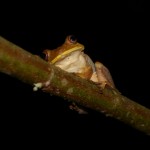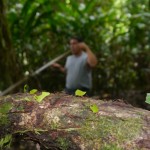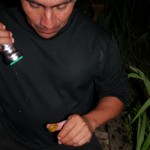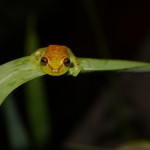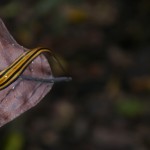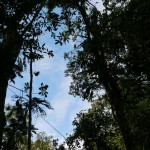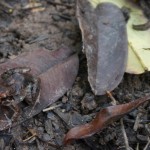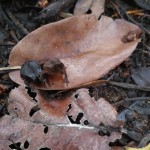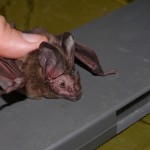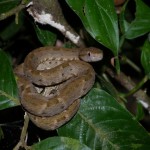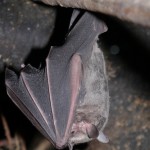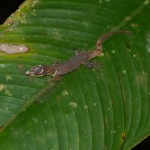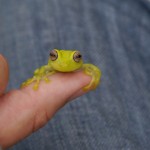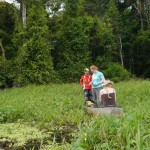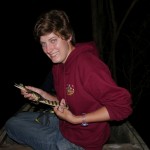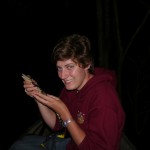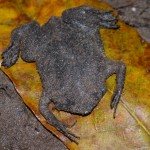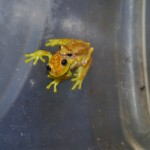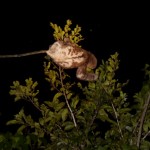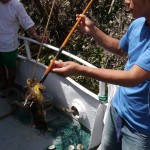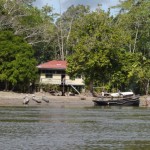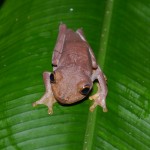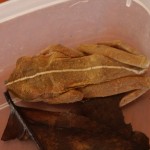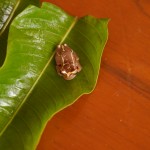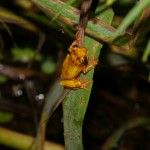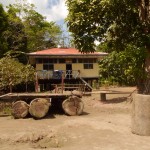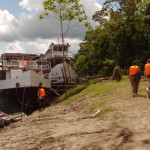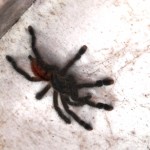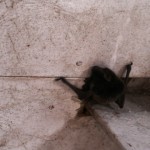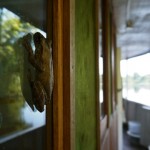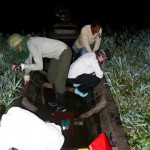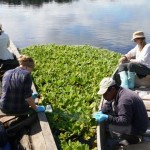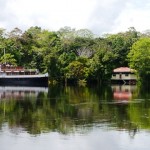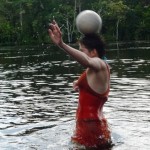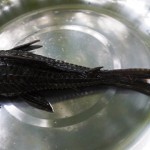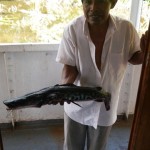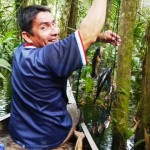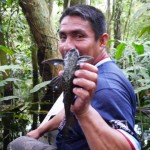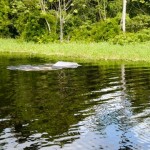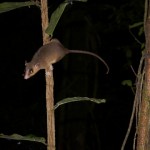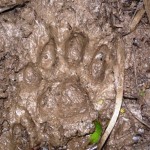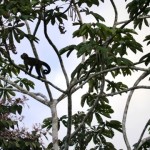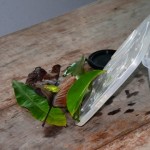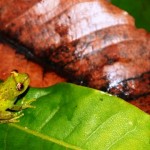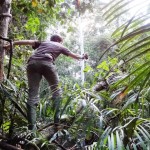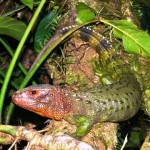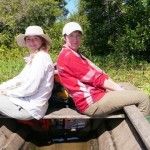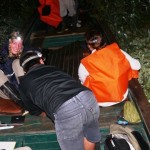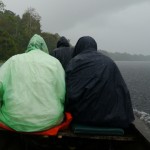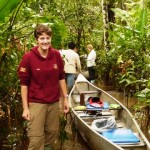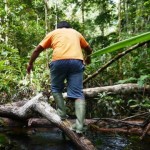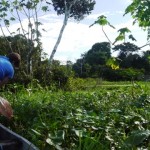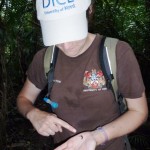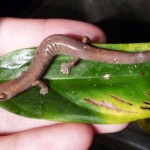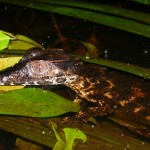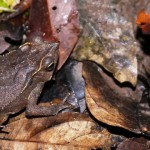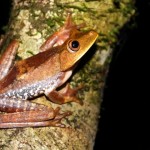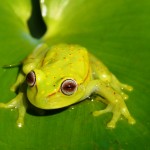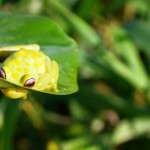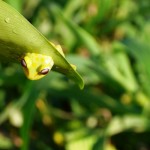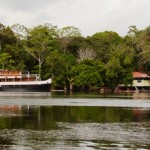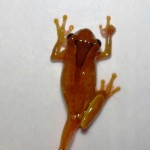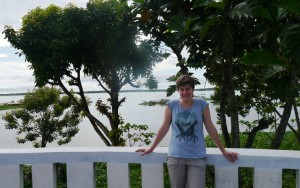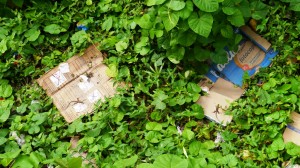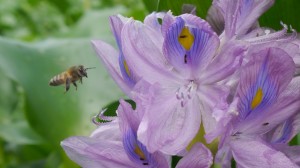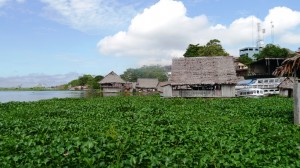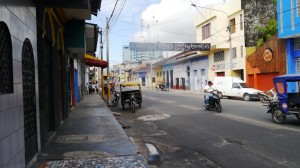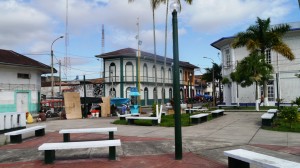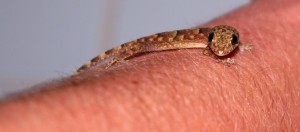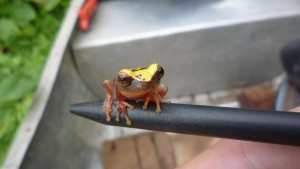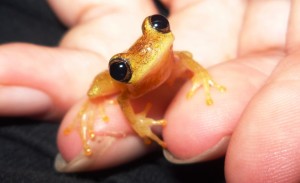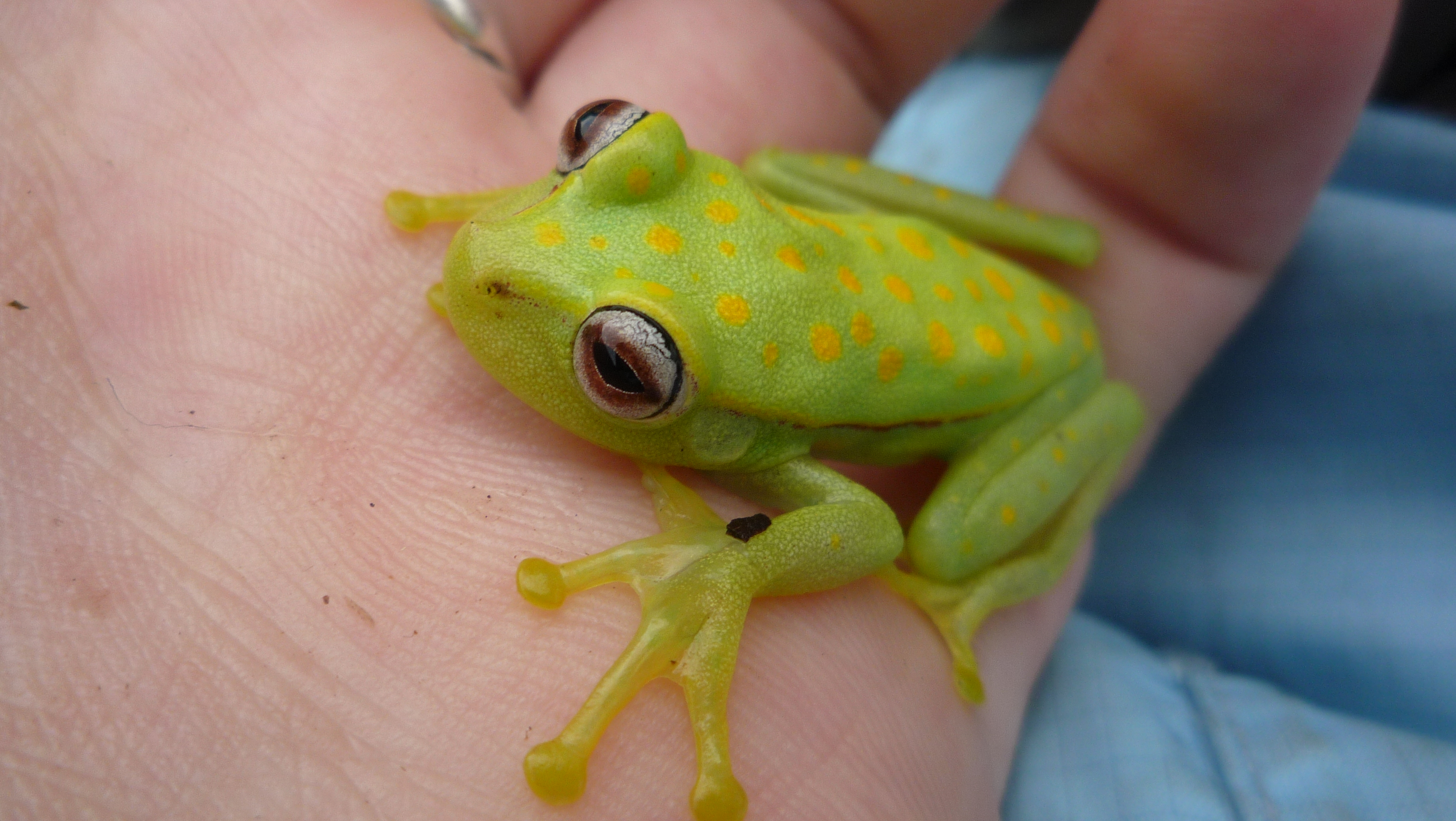I am back in Iquitos with limited internet access and so have been able to post this 🙂 I really wanted to put the photos alongside the corresponding text, however the internet is having so many problems that I’ve just put a gallery at the bottom! Enjoy…..
I will be back in Iquitos in four days time and so decided to write a blog post now, as I will have lots to do in Iquitos! My first month has been a very productive one. We reached frog number 400 today, and have found 29 different species of amphibian, including one salamander. This month has been a great starting point for my research, as I have been able to try out many different methods, some of which worked very well and others which were less successful. I should probably start at the beginning: we started out with an Earthwatch expedition who were staying on the Ayapua (this boat is from the rubber boom and has been restored to its original glory – it’s beautiful and even has a bar on the top deck). This was a very easy and comfortable way to start my fieldwork, with air conditioning at every meal – in fact I was often cold! However we were not staying on the Ayapua, and moved over to the Pithecia after arriving at PV2, the second guard station in the Pacaya-Samiria reserve. This boat is a floating research vessel which does not have an engine and is moved about between the sites by the other boats. It has definitely become home over the past few weeks. We have a beautiful resident treefrog (Osteocephalus taurius) which is out every night eating the mosquitoes, and also have bats that live beneath the floor upstairs. There are many other animals living on our boat including a tarantula, and at night we often hear something large scampering about on the roof. We’re not too sure what this is, although we have our suspicions that our guide Miguel turns into a possum at night!
I have equipment all over the communal/eating/research room, and am also keeping four tadpoles that I first found as little green blobs of jelly. I plan to keep and document their development, and eventually idetify their species. The Earthwatch group were with us for the first few weeks, and a couple of the volunteers joined us frogging every other night, visiting rafts of floating vegtation. On the nights without Earthwatch volunteers, we visited transects within the flooded forest. The water level is so high that there is almost no land at all – the nearest patch is an hour and a half away! Therefore, I have been concentrating my surveys on the flooded forest, and recording the water level as it drops to see what impact this has on the frogs. These surveys are good fun: we go out in canoes with a guide in the front and paddle through the forest very slowly using torches to search for frogs. This is a very effective method, resulting in one of us calling “rana rana rana” while trying to stop the canoe and not scare the frog away. We have two main guides, Miguel and Juan, who come out with us every night, and two guys from the local guard station, Samuel and Nolberto, also joining us on some nights. All four of them are very good at catching frogs and also at keeping the mood light-hearted, even when we are all covered in mosquitoes biting every bit of bare skin! None of the guides speak English and so I am completely indebted to Elli and Emma who have translated so much for me and have enabled a very smooth running of the methods! I’ve been trying to learn as much as possible so that I can take over this role when the DICE group arrives. I’ve had three extra pairs of hands for this month and for that I am very grateful! Isabel Rodgers and Eleanor Warren-Thomas are my two research assistants who I contacted prior to coming out here. I knew Izzy from her frog research on a DICE expedition to Pacaya-Samiria in 2010, and worked with her on my previously published article. I contacted her when I was seeking a field assistant, and she was very willing to join me. Elli and I were put in contact by Andrew Gray, as she has also studied frogs in Peru in the past, although I did not have the chance to meet her prior to her booking her flights to Peru! These two have been an amazing help, offering advice and ideas, as well as working incredibly hard and never once complaining about the heat/mosquitoes/late nights etc… I don’t think I could have had two better assistants. We have also had a great deal of help from Emma Docherty who is here on a six month placement, helping out on the many different expeditions Amazon Eco undertakes. She has taken on the role of a frog researcher with great enthusiasm and has also been a great help to my project.
Here are a couple of photos of us frogging: one is a daytime survey of floating vegetation to search for frogspawn, and the other is a night time quadrat searching for frogs, also on floating vegetation.
After the Earthwatch group left we were down to only 7 people: me and my assistants, two guides, and our cook Denise. We very quickly settled into a good routine, and planned our work for the coming weeks with a timetable on the wall, to ensure that we completed enough repeats of all the different transects and sites. We have been rising early, having breakfast at about 7/8 am (usually rice with tuna or sardines) followed by morning surveys of the flooded forest, or daytime searching of floating vegetation. Lunch is usually around 1pm (Rice with something yummy) and afternoons are usually devoted to typing up data, organising photos and occasionally having a swim to cool down. We have dinner at 7 which is always good fun, as the guides and our cook all join us for dinner. My Spanish is definately benefiting from this, as I am able to understand a lot of what they are saying! After dinner we go out frogging again, either to a flooded forest transect or to survey the floating vegetation in the channel or lake off the side of the main river. We usually don’t get back until about 11pm, and then it’s off to bed to start all over again the next day!
There is so much that I could write about, so I have decided to pick out a selection of my best photos and talk about them, so that everyone can get a taste of Amazon life! This first one is for my Dad: I know he wanted me to do some fishing, so I joined the Earthwatch volunteers on a fishing trip one day. The photos show me and our guide Roberto bringing in the net, plus my favourite fish! There is also a photo of Miguel holding a very large fish that Samuel caught for us one day for dinner, and was particularly yummy! The next photo isn’t actually the best dolphin one I have, as I’m saving that to show people when I get home, but is the second best! There are two river dolphins in the Amazon: the Boto (pink river dolphin) and a smaller gray dolphin that looks a lot more like a marine dolphin. We have been seeing the pink dolphins every day, as when the water levels are high they make the most of the huge abundance of fish! I went out with the Earthwatch volunteers again with the intention of getting a good picture and I am very happy with my results.
The following photos are a selection of animal photos which we have seen over the last month, as well as a jaguar footprint that we found while on the terrestrial transect. There is a capuchin photo, from a group that were very conveniently sat right next to our boat, so I was able to use my gorilla pod (camera stand) to take some good photos and videos. We see a lot of sloths along the river edges up in the trees, and while in the channel one evening we saw about 20! The last photo is an opossum, and we have also seen lots of other small mammals while out on our flooded forest transects at night.
The next two sets of photos are quite interesting. I bought a good camera before coming out to Peru and have been trying to get some good photos with it. The first two photos are me trying to take a photo of a Northern Caiman Lizard, which involved climbing out of the canoe onto a fallen tree while in the flooded forest. The second is the resulting photo! The next two photos are of a small tree frog species which was very photogenic, as it just sat there happily without hopping away. The first photo shows this little frog posing for a photograph, and the second is the best shot I took of it.
The next few photos are a selection of interesting photos of us doing research! One shows what happens when a frog jumps into the bottom of a boat under the wooden plank… We did eventually manage to catch the frog in question. There is also a picture of Izzy and Emma sitting in the rain on a particularly wet day when we made the one and a half hour journey to the terrestrial transect in the rain. I thought I should include some photos of me, so there is one of me searching through floating vegetation for frogs, as well as one of our flooded forest transects when the water level had dropped so far that we had to get out and pull the canoe! Finally there is a picture of Juan climbing out onto a fallen tree to search for a couple of frogs – their dedication to catching an escaped frog is amazing!
The final collection of photos is the best – of course they are the frog photos! There is a selection of frog photos, one of our salamander, and one photo of a baby caiman. I have also included a photo of a frog who put his head through a hole in the leaf that I was trying to photograph him on. This he did himself and I was laughing so much it took me several attempts to take this photo.

